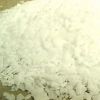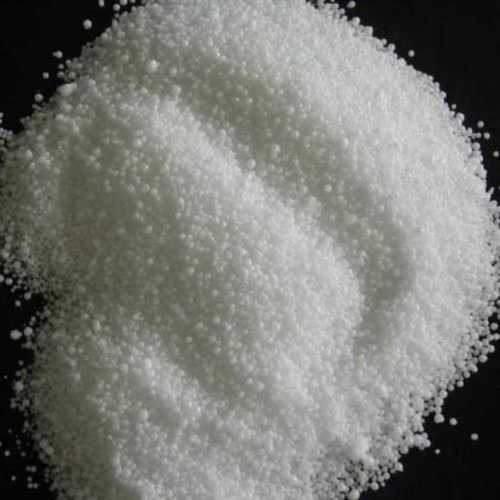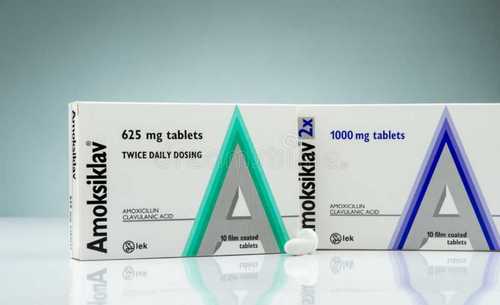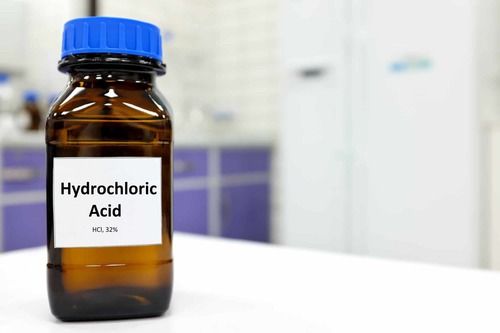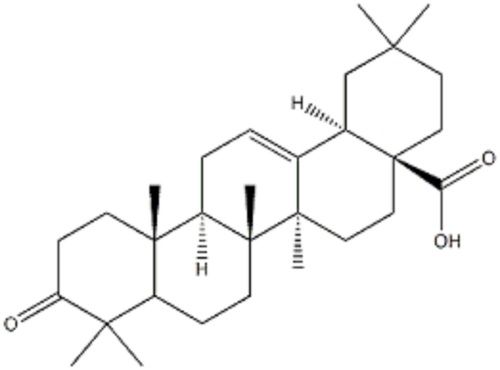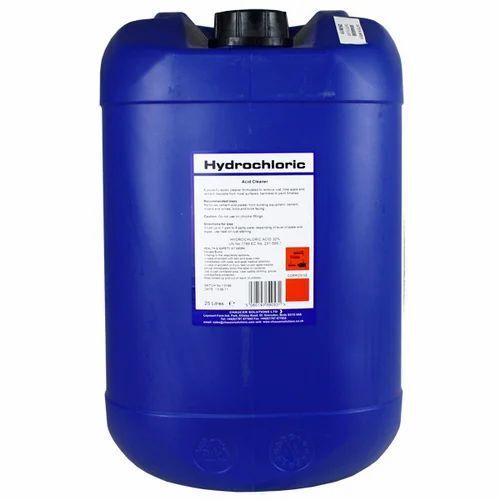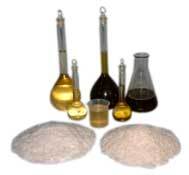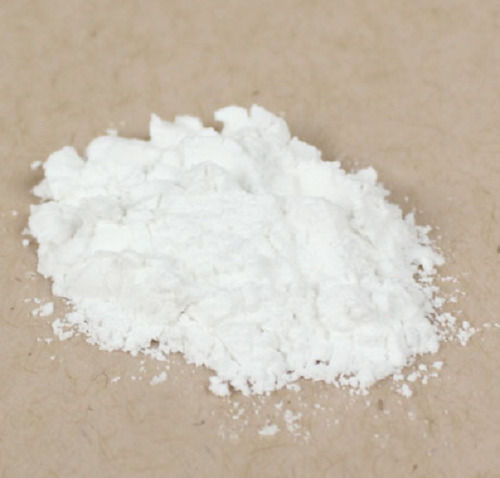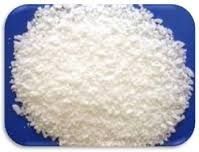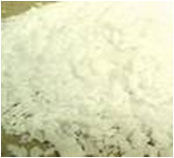12 Hydroxy Stearic Acid In Hyderabad
(49 products)12 Hydroxy Stearic Acid
GradeIndustrial Grade
ApplicationLubricants
Purity99%
UsageWidely Used
StorageCool
AppearanceWhite Flakes
Madhusree Rayalaseema Alkalies & Allied Chemicals Ltd
Kurnool
Salicylic Acid Application: Industrial
Price Trend: 35000.00 - 45000.00 INR/Metric Ton
MOQ1-3 Metric Ton/Metric Tons
Molecular FormulaC7H6O3
ApplicationIndustrial
StorageRoom Temperature
Melting Point158.6 deg C
Physical FormPowder
Purity99.9%
12 Hydroxy Steraic Acid Powder Application: Industrial
Price: 1500 INR/Bottle
MOQ10 Bottle/Bottles
Physical FormPowder
Shapeother Powder
GradeIndustrial Grade
ApplicationIndustrial
Type12 Hydroxy Steraic Acid Powder Other
Amoxicillin+Clavulanic Acid 1000Mg Grade: Medicine Grade
Price: 50 USD ($)/Box
MOQ10 Box/Boxes
GradeMedicine Grade
Solubility100%
Shelf Life1 Years
StorageRoom Temperature
Hydrochloric Acid (HCL) - 32% Purity Industrial Grade Liquid for Water Treatment Versatile Industrial Applications
Price: 1000 INR/Bottle
MOQ50 Bottle/Bottles
Physical FormLiquid
GradeIndustrial Grade
TypeOther Hydrochloric Acid
Inorganic Acid TypesHydrochloric Acid
Purity32%
ApplicationIndustrial
Olean-12-En-28-Oic-223-D3 Acid 3-Hydroxy- (3I )- Application: Laboratories
UseLabs
ApplicationLaboratories
Cas No-106-14-9 12-Hydroxy Stearic Acid - Application: Lubricants
MOQ10 Kilograms/Kilograms
ApplicationLubricants
GradeInduatrial
Purity99%
StorageRoom Temperature
CAS No106-14-9
Physical FormLiquid
Sarne Industries Private Limited
Kharghar, Navi Mumbai
 Trusted Seller
Trusted Seller2 Years
12-Hydroxy Stearic Acid - Cas No: 106-14-9
Price: 125 INR/Kilograms
MOQ1 Kilograms/Kilograms
ColorWhite
StorageRoom Temperature
CAS No106-14-9
TypePharmaceutical Intermediates
GradeMedicine Grade
UsageIndustrial
Vcare Medicines
Mumbai
 Super Bonanza
Super Bonanza Trusted Seller
Trusted Seller Super Premium
Super Premium10 Years
 Super Premium
Super Premium12 Hydroxy Stearic Acid - Viscous Liquid Light Yellow | 98%+ Purity 70-72 °C Melting Point Acid Value 198-202 mg KOH/g Usage in Cosmetics & Coatings
AppearanceViscous liquid
ColorLight yellow
Purity98%+
Melting Point70-72 °C
Acid Value198-202 mg KOH/g
Hydroxyl Value170-180 mg KOH/g
A. B. Enterprises
Ghatkopar East, Mumbai
 Super Bonanza
Super Bonanza Trusted Seller
Trusted Seller21 Years
12-Hydroxy Stearic Acid
MOQ20 Ton/Tons
Supply Ability100 Per Week
Delivery Time1 Week
Main Domestic MarketAll India
Jayant Agro-organics Ltd.
Mumbai
 Trusted Seller
Trusted Seller Super Seller
Super Seller23 Years
Hydroxystearic Acid - High Purity | Ideal for Cosmetic and Pharmaceutical Applications Non-Toxic and Eco-Friendly
FeaturesBiodegradable Non-toxic Emulsifier Lubricant Thickener Water-resistant Stable Versatile
Chemvera Specialty Chemicals Pvt. Ltd.
Mumbai
 Trusted Seller
Trusted Seller Super Seller
Super Seller10 Years
Phospho Tungstic Acid - Application: Lab Chemicals
Price: 7800 INR/Kilograms
MOQ25 Kilograms/Kilograms
PropertiesPhosphotungstic acid can be prepared by the reaction of sodium tungstate Na2WO4.2H2O with phosphoric acid H3PO4 acidified with hydrochloric acid HCl.[2]Phosphotungstic acid solutions decompose as the pH is increased. A step-wise decomposition has been determined and the approximate compositions at various pH values are as follows:[8]pH principal components1.0 [PW12O40]3a^'2.2 [PW12O40]3a^' [P2W21O71]6a^' [PW11O39]7a^'3.5 [PW12O40]3a^' [P2W21O71]6a^' [PW11O39]7a^' [P2W18O62]6a^' [P2W19O67]10a^'5.4 [P2W21O71]6a^' [PW11O39]7a^' [P2W18O62]6a^'7.3 [PW9O34]9a^'8.3 PO43a^' WO42a^'The species [PW11O39]7a^' is a lacunary or defective Keggin ion. The [P2W18O62]6a^' has a Dawson structure. At pH less than 8 the presence of ethanol or acetone stabilises the anion [PW12O40]3a^' reducing decomposition.[8]Tungstophosphoric acid is thermally stable up to 400 AdegC and is more stable than the analogous silicotungstic acid H4SiW12O40.[9]Large quantities of polar molecules such as pyridine are absorbed into the bulk phase and not simply on the surface. Solid state NMR studies of ethanol absorbed in the bulk phase show that both protonated dimers ((C2H5OH)2H+) and monomers (C2H5OH2+) are present.Phosphotungstic acid is less sensitive to reduction than phosphomolybdic acid. Reduction with uric acid or iron(II) sulfate produces a brown coloured compound. the related silicotungstic acid when reduced forms a similar brown compound where one of the four W3 units in the Keggin structure becomes a metal-metal bonded cluster of three edge shared W(IV) octahedra.[10]Phosphotungstic acid is the strongest of heteropolyacids. Its conjugate base is the PW12O403a^' anion.[11] Its acidity in acetic acid has been investigated and shows that the three protons dissociate independently rather than sequentially and the acid sites are of the same strength.[12] One estimate of the acidity is that the solid has an acidity stronger than H0 =a^'13.16[9] which would qualify the compound as a superacid. This acidic strength means that even at low pH the acid is fully dissociated.
CAS No1343-93-7
UsageCatalystIn common with the other heteropolyacids phosphotungstic acid is a catalyst and its high acidity and thermal stability make it a catalyst of choice according to some researchers.[13] It is in solution as a homogeneous catalyst and as a heterogeneous catalyst "supported" on a substrate e.g. alumina silica. Some acid catalysed reactions include:the homogeneous catalysis of the hydrolysis of propene to give 2-propanolthe homogeneous catalysis of the Prins reactionthe heterogeneous catalysis of the dehydration of 2-propanol to propene and methanol to hydrocarbons.Dyeing and pigmentsPhosphotungstic acid has been used to precipitate different types of dyes as "lakes".[14] Examples are basic dyes and triphenylmethane dyes e.g. pararosaniline derivatives.HistologyPhosphotungstic acid is used in histology for staining specimens as a component of phosphotungstic acid haematoxylin PTAH and aEURoetrichromeaEUR reagents and as a negative stain for imaging by a transmission electron microscope.Phosphotungstic acid haematoxylin (PTAH)Mallory described the reagent now generally known as PTAH in 1897.[16] PTAH stains tissues either reddish brown or blue depending on their type. This property of simultaneously staining two different colours is different from other haematoxylin reagents e.g. alum-haematoxylin. The role of phosphotungstic acid and the mechanism of staining is not fully understood. Interestingly the active component of haematoxylin is the oxidised form haematin although this rarely acknowledged in the literature which refer to haematoxylin staining. Phosphotungstic acid forms a lake with haematin.[17] The make aEUR"up of the reagent is uncertain examination of a year old sample showed there to be three coloured components blue red and yellow.[18] These were not identified. Some investigations of aEURoemodelaEUR systems reacting various compounds such as amino acids purines pyrimidines and amines with PTAH show that they give rise to different colours.Trichrome reagentsIn these reagents two or three basic dyes are used with phosphotungstic acid in either a one step or multi-stage procedure. These reagents colour different tissue types different colours. Again the mechanism of staining is not fully understood. Some explanations include the proposal that phosphotungstic acid acts as a mordant to bind the dye to the tissue[20] or that alternatively it binds to tissue blocking it to dye molecules.Negative stainingAdsorption onto tissue or the surface of viruses and its electron density are the bases of phosphotungstic acids action as a negative stain. This electron density arises from the presence of the 12 tungsten atoms which each have an atomic number of 74. The mechanism of the adsorption onto tissue has been proposed as being electrostatic rather than involving hydrogen bonding as adsorption is not affected by pH.AnalysisThe potassium salt is only slightly soluble unlike most other phosphotungstate salts and has been proposed as a method for the gravimetric analysis of potassium.Precipitation of proteinsIn a number of analytical procedures one of the roles of phosphotungstic acid is to precipitate out proteins. It has been termed a "universal" precipitant for polar proteins.[23] Further studies showed that no precipitation occurred with I+--amino groups but did occur with guanidino Iu-amino and imidazole groups.MedicinalVery little work appears to have been carried out in this area. One example relates to liver necrosis in rats.Composite proton exchange membranesThe heteropoly acids including phosphotungstic acid are being investigated as materials in composite proton exchange membranes such as Nafion. The interest lies in the potential of these composite materials in the manufacture of fuel cells as they have improved operating characteristics
StorageRoom Temperature
Molecular Weight2880.2 g/mol Kilograms (kg)
Shelf Life5 Years
Evans Chem India Pvt. Ltd.
Vile Parle West, Mumbai
 Trusted Seller
Trusted Seller Super Seller
Super Seller11 Years
FAQs Related to 12 Hydroxy Stearic Acid In Hyderabad
How many 12 hydroxy stearic acid products are available in Hyderabad?
Where can I find 12 hydroxy stearic acid nearby Hyderabad?
What are some related categories to 12 hydroxy stearic acid in Hyderabad?
Can I trust the Hyderabad Based 12 Hydroxy Stearic Acid suppliers listed on Tradeindia?
How many Hyderabad based 12 Hydroxy Stearic Acid manufacturers are there?
What is the price range of 12 hydroxy stearic acid in Hyderabad?
| Company Name | Currency | Product Name | Price |
|---|---|---|---|
| - | - | 12 Hydroxy Steraic Acid Powder | 1500 INR (Approx.) |
| - | - | Amoxicillin+Clavulanic Acid 1000mg | 50 USD ($) (Approx.) |
| - | - | Hydrochloric Acid (HCL) | 1000 INR (Approx.) |
| - | - | 12-hydroxy Stearic Acid | 125 INR (Approx.) |
| - | - | 12 Hydroxy Stearic Acid | 190 INR (Approx.) |
| - | - | Hydroxystearic Acid | 12 -3400 INR (Approx.) |
| - | - | Phospho Tungstic Acid | 7800 INR (Approx.) |
| - | - | 12 Hydroxy Stearic Acid | 198 INR (Approx.) |
| - | - | Surfactant Emollient And Thickener White Hydroxy Stearic Acid | 160 INR (Approx.) |
| - | - | 12 Hydroxy Stearic Acid | 150 INR (Approx.) |
| - | - | Hydroxy Stearic Acid (12 Hsa) | 90 INR (Approx.) |
| - | - | 12 hydroxy stearic acid | 145 INR (Approx.) |
| - | - | 12 hydroxy Stearic Acid (12 - HSA) | 170 INR (Approx.) |
| - | - | Ethylenediaminetetraacetic Acid | 95 INR (Approx.) |
| - | - | 12-Hydroxy Stearic Acid Flakes | 175 INR (Approx.) |
What is the delivery time for 12 hydroxy stearic acid in Hyderabad?
How many trusted sellers are available for 12 Hydroxy Stearic Acid in Hyderabad?
Hydrochloric Acid - Pure Liquid Colorless Appearance 99% Purity for Industrial Use
MOQ10000 Kilograms/Kilograms
Purity99%
ApplicationIndustrial
12 Hydroxy Stearic Acid Usage: Industrial
Price: 198 INR/Kilograms
MOQ200 Kilograms/Kilograms
UsageIndustrial
12 -Hydroxy Stearic Acid
Purity98%
Molecular weight300.47 g/mol
Melting point78-80 °C
SolubilityInsoluble in water
AppearanceWhite crystalline powder
Packaging25kg drums
Royal Castor Products Limited
Ghatkopar East, Mumbai
12-Hydroxy Stearic Acid - High Melting Waxy Solid | Essential Ingredient for Lubricants and Additives
GradeIndustrial Grade
ApplicationLubricants
Purity90% min
UsageIndustrial
StorageCool
AppearanceWhite to off-white powder
Adya Oils & Chemicals Ltd.
Santacruz West, Mumbai
Hydroxy Stearic Acid - Clear Powder Versatile Emollient for Skin and Hair Care Applications
Price: 160 INR/Kilograms
MOQ2000 Kilograms/Kilograms
ApplicationFertilizer Paints Other
Poisonous1
Chemical NameAspartame
ColorWhite
UsageConstruction Chemical Additive
StorageFreezer
12 Hydroxy Stearic Acid - Cas No: 106-14-9
Price: 150 INR/Kilograms
MOQ200 Kilograms/Kilograms
FormPowder
StorageDry Place
Purity98%
SmellOther Normal
CAS No106-14-9
UsageIndustrial
Hydroxy Stearic Acid (12 Hsa) Application: Industrial
Price: 90 INR/Kilograms
MOQ500 Kilograms/Kilograms
GradeOther
UsagePharmaceutical Raw Materials
ApplicationIndustrial
Hydroxy Stearic Acid (Flakes(12)
AppearanceFlakes
Purity98%
Melting point70-75°C
Packaging25kg bags
SolubilityInsoluble in water
StorageCool and dry
Lactobionic Acid
Purity99%
AppearanceWhite powder
SolubilityWater soluble
PackagingPlastic bottle
StorageRoom temperature
Shelf life2 years
12 Hydroxy Stearic Acid (12-HAS)
ApplicationGreases
PurityHigh
UsageIndustrial
StorageDry Place
AppearanceWhite Powder
FeaturesHigh Viscosity Low Price Multi-Purpose Glycerin Free Premium Greases
12 Hydroxy Stearic Acid Density: ‎0.9 0.1 G/Cm 3
Price: 145 INR/Kilograms
MOQ50 Kilograms/Kilograms
FormPowder
Molecular Weight‎300.5 g/mol
Molecular Formula‎C18H36O3
Density‎0.9+-0.1 g/cm 3
StorageRoom Temperature
Purity98%
Jigs Chemical Limited
Ahmedabad
 Super Bonanza
Super Bonanza Trusted Seller
Trusted Seller Super Premium
Super Premium10 Years
 Super Premium
Super Premium12 Hydroxy Stearic Acid (12 - Hsa) Cas No: 106-14-9
Price: 170 INR/Kilograms
MOQ400 Kilograms/Kilograms
HS Code29157040
ClassificationOther
Chemical Name12 hydroxy Stearic Acid (12 - HSA)
CAS No106-14-9
GradeIndustrial Grade
UsageAlso known as 12-hydroxystearic acid and 12-HSA it is used as a thickener for silicon grease as a rubber activator/accelerator and in the manufacture of certain personal care products among other applications
Dev International
Ahmedabad
 Trusted Seller
Trusted Seller Premium Seller
Premium Seller6 Years
Ethylenediaminetetraacetic Acid Application: Industrial
Price: 95 INR/Kilograms
MOQ10 Kilograms/Kilograms
Purity94%
Shelf Life1-3 Years
Physical FormPowder
Product TypeEthylenediaminetetraacetic Acid
ApplicationIndustrial
StorageRoom Temperature
Bhimani Chemicals Pvt. Ltd.
Ellis Bridge, Ahmedabad
 Trusted Seller
Trusted Seller Premium Seller
Premium Seller9 Years
Stearic Acid - Flake 941 kg/m³ Density Melting Point 69.3 °C | Versatile Application for Soaps Candles and Cosmetics
Price Trend: 60.00 - 200.00 INR/Kilograms
MOQ25 Kilograms/Kilograms
Melting Point69.3 AdegC
Product TypeStearic Acid
ApplicationIndustrial
Density941 kg/mA3 Gram per litre (g/L)
TypeFlake
12-Hydroxy Stearic Acid Flakes - Application: Lubricants
Price: 175 INR/Kilograms
MOQ50 Kilograms/Kilograms
Molecular FormulaC18H36O3
StorageRoom Temperature
SolubilitySoluble in ethanol ether and organic solvents
Melting Point70-75 Degree Celsius
Purity99%
HS Code29169990
Swadesh(india) Chemical Private Limited
Naroda, Ahmedabad
Popular Categories in Hyderabad
Popular Products
